Emily Acheson
Mapping COVID-19:
A Look at GIS Resources Around the World
By: Emily Acheson, Balca Ağaçsapan, Antonio Annis, Rosa Coluzzi, Nael Al Hassanieh, Simon Haumann, Leigh McKenzie, Damien Mensell, Alan Pearse, Maud Soetens, Lisa Stähli, Sander Varbla, Kenneth Wong
May 15th, 2020
Mapping plays a central role in understanding emergence, outbreak clusters, and disease spread over space and time. As the distribution and destruction of the disease COVID-19 (caused by the severe acute respiratory syndrome coronavirus 2, or SARS-COV-2) increases, so do efforts from GIS analysts around the world to determine where it started, where it is now, and where it’s going.
To learn about mapping dashboards, data, and strategies around the world, I contacted a group of Esri Young Scholars I met at the Esri User Conference in San Diego in 2017. Nearly everyone offered contributions to this article. I also made a call out to volunteers on Twitter, and several graciously offered contributions or suggestions.
To all of the contributors, thank you.
The information provided below is just a sample of the many incredible mapping efforts being done around the world to fight COVID-19, regardless of the mapping technologies powering them. I asked for anything with mapping and GIS, so some of the examples below are not affiliated with Esri.
Nearly every contributor is from, and/or writes about, COVID-19-related GIS work being done in one of these countries or regions:
-- Australia
-- Canada
-- Estonia
-- France
-- Hong Kong
-- Italy
-- Lebanon
-- The Netherlands
-- New Zealand
-- Switzerland
-- Turkey
-- The United Kingdom
-- The United States
Due to article length limitations, we each only discuss one or two mapping projects per country. However, many countries are developing numerous mapping strategies and, since this article was started over a month ago, lots has changed since then. We have covered as much as we could with the space and time given.
We hope you find it useful,
Emily Acheson
Esri-Powered Dashboards and Initiatives
Nael Al Hassanieh
Maud Soetens
Leigh McKenzie
Lisa StÄhli
Country-Specific Dashboards and Initiatives
International Mapping dashboards
Esri-Powered Dashboards and Initiatives
Australia
Written by Alan Pearse
Some other dashboards and data in Esri Australia’s COVID-19 hub take other approaches to COVID-19 mapping besides directly plotting confirmed cases.
For example, one app maps the spatial density of people over 65 years of age based on Australia’s 2016 census data in order to paint a picture of where one of the groups most vulnerable to COVID-19 are situated.
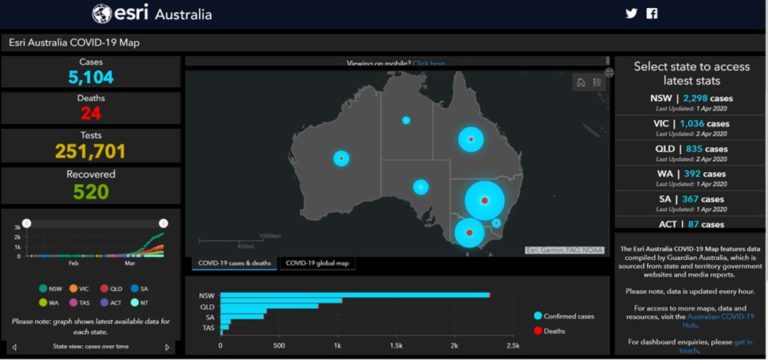
Canada
Written by Emily Acheson
The BC Centre for Disease Control provides its own maps and COVID-19 data for the province, which are updated Monday to Friday at 5 pm (Pacific Standard Time). The data are also provided in .csv format for free download.
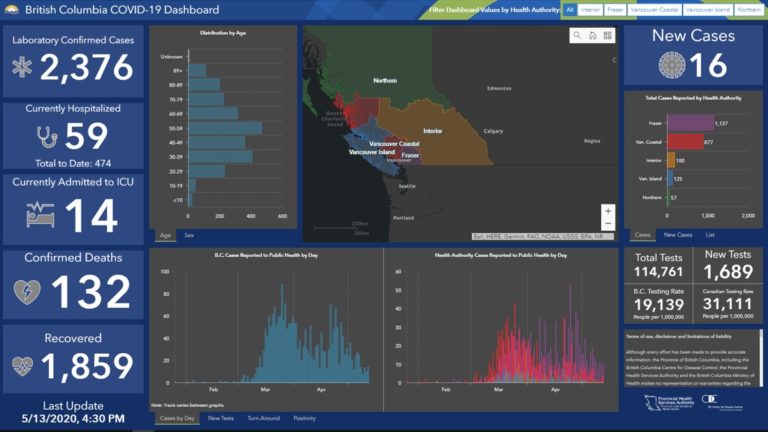
Estonia
Written by Sander Varbla
For instance, an Estonian geoinformatics company AlphaGIS has set up a web portal where materials on COVID-19 can be found. They use the Esri platform (available only in Estonian). Besides maps that show the current spread of the virus, there is also information about European transit options and travel restrictions, distribution of risk groups (people 60+) and materials regarding apothecaries and virus testing sites in Estonia, among others. One can also find a map that directs to the resources and maps of other countries.
Italy
Written by Dr. Antonio Annis and Dr. Rosa Coluzzi
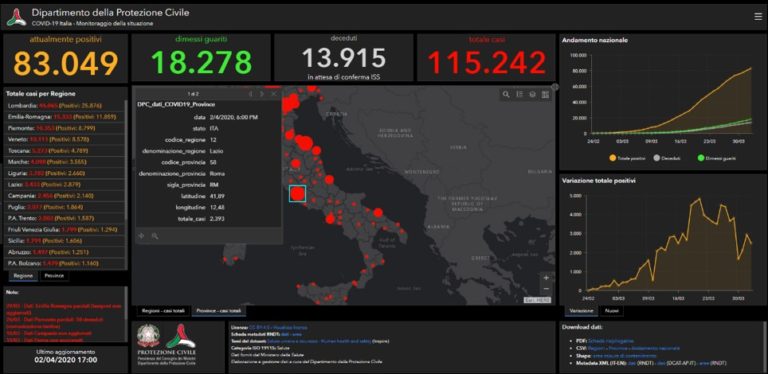
Lebanon
Written by Nael Al Hassanieh
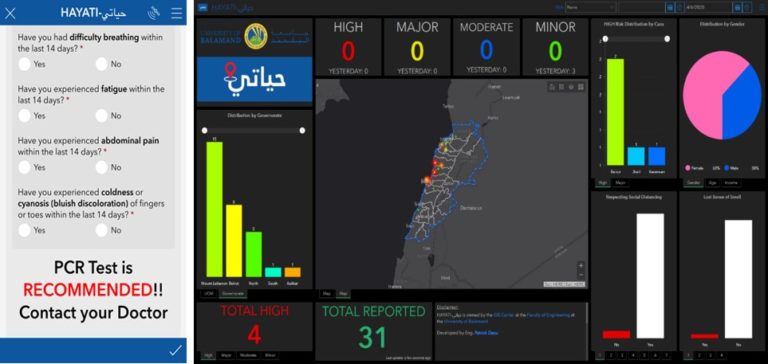
The Netherlands
Written by Maud Soetens
1) The Netherlands’ Cadastre: This organization collects and registers data, including spatial data, on property and the rights involved. During the COVID-19 pandemic, they are reporting, among other things, locations of cemeteries and crematoriums.
2) Locatus: This European market database is delivering data about the size of supermarkets, pharmacies and drugstores and therefore the number of people that can enter.
3) Cyclomedia: This Dutch company has made their high quality 360° street photos of the whole Netherlands publicly available so organizations can work better from home.
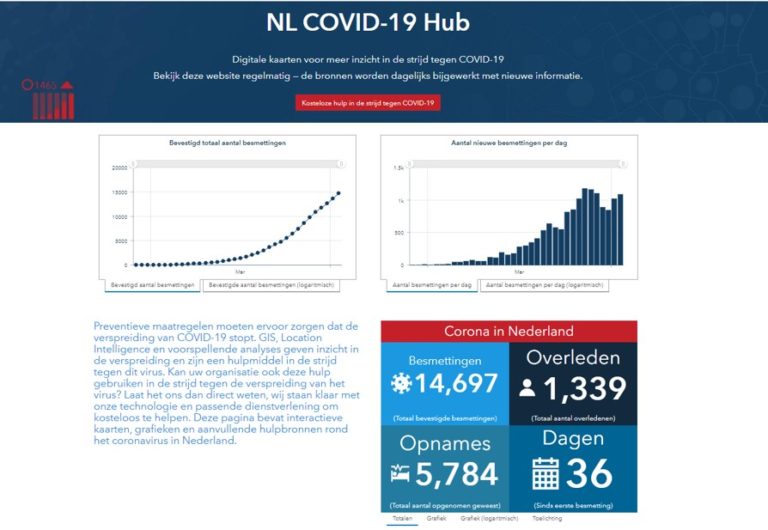
New Zealand
Written by Leigh McKenzie
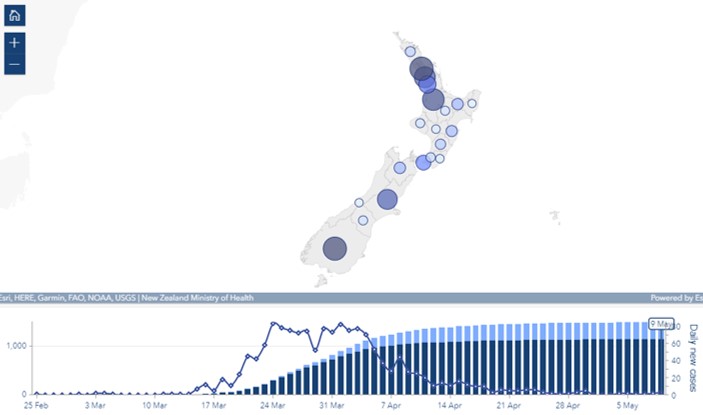
Switzerland
Written by Lisa Stähli
One example of these location-based projects is a risk map here, where users can upload their location tracks and calculate their infection risk (see the image below). Powered by Esri, this risk map example shows how powerful GIS can be not only for governments to keep track of the spread, but also for individuals to make informed decisions for themselves.
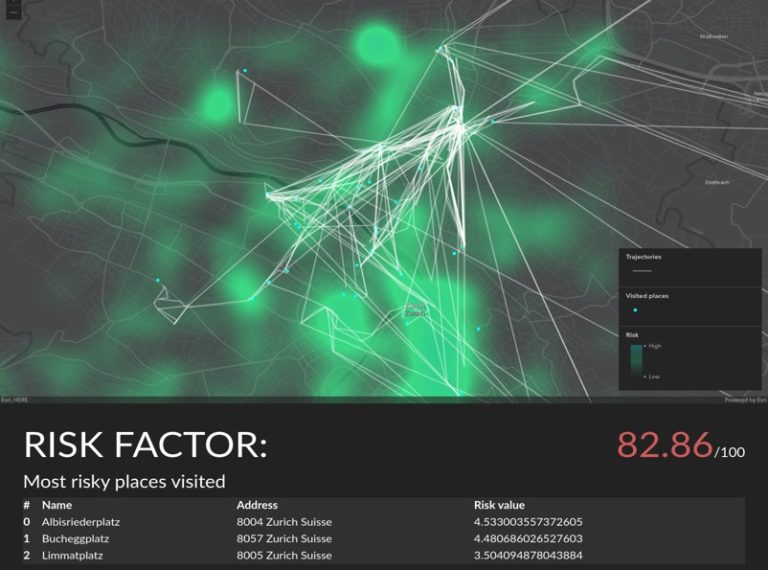
The United Kingdom
Written by Dr. Damien Mansell
The underlying web map uses proportional symbology, with the area of the circle relative to the number of cases in the geographic area. This is an effective way to avoid the inherently unequal characteristics of the local authority areas including the size of the regions and population densities. This standard practice is something that has been overlooked by many media-produced maps, which instead plot totals as a choropleth map and make comparisons between areas meaningless.
Symbol clustering is applied to the circles to make it easier to visually extract meaningful information from the data. At the country level, the local data are combined to show national values. As the user zooms in to explore the map, the symbols update to show the local authority data (see the figure below).
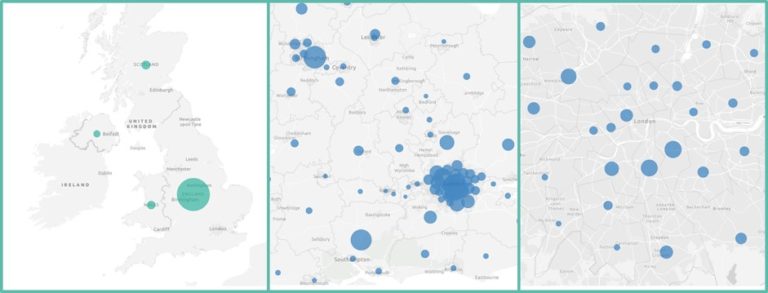
The United States / International
Written by Emily Acheson
First shared publicly on January 22nd, 2020, this dashboard is updated in real time and provides confirmed cases, deaths, recoveries, epidemiological curves, and more. If you’d like to read more about how it was made, details have been published in The Lancet Infectious Diseases here.
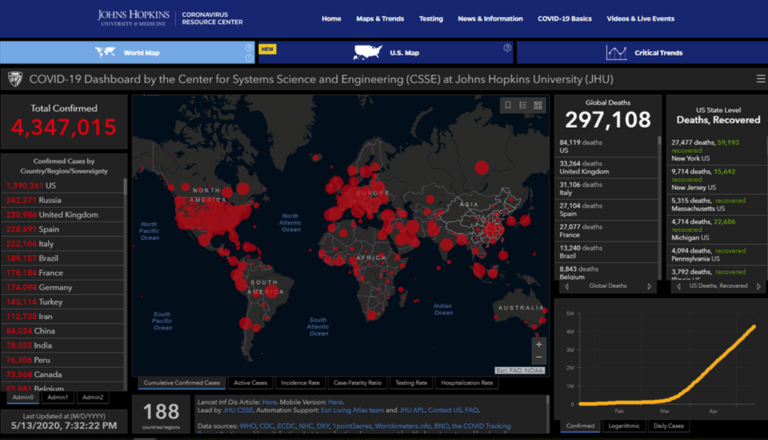
Country-Specific Dashboards and Initiatives
Canada
Written by Emily Acheson
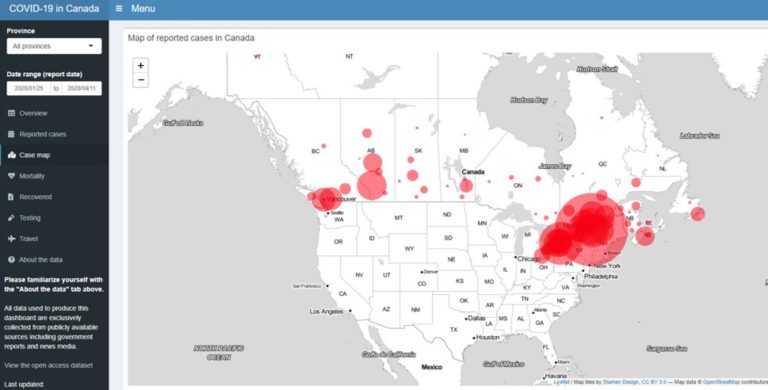
Estonia
Written by Sander Varbla
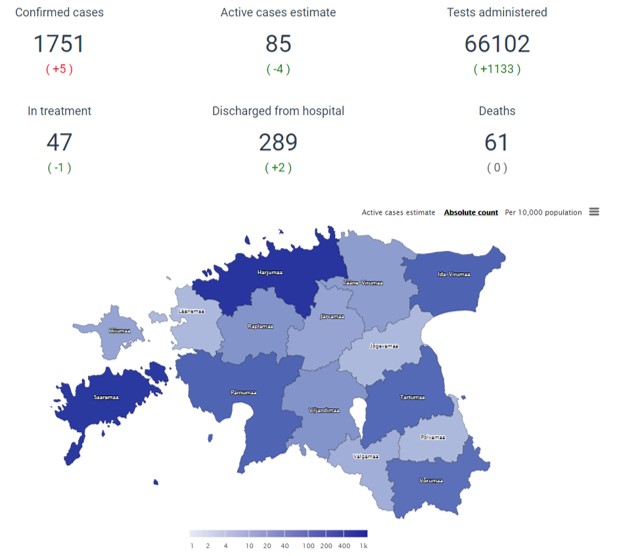
Hong Kong
Written by Kenneth Wong
A powerful information website in Hong Kong called wars.vote4.hk has been developed completely by volunteers. The website integrates information about high-risk areas, each patient’s condition, and Open Street Map-based interactive maps plotting every building with COVID-19 cases. In addition to confirmed cases, patients in quarantine are also mapped.
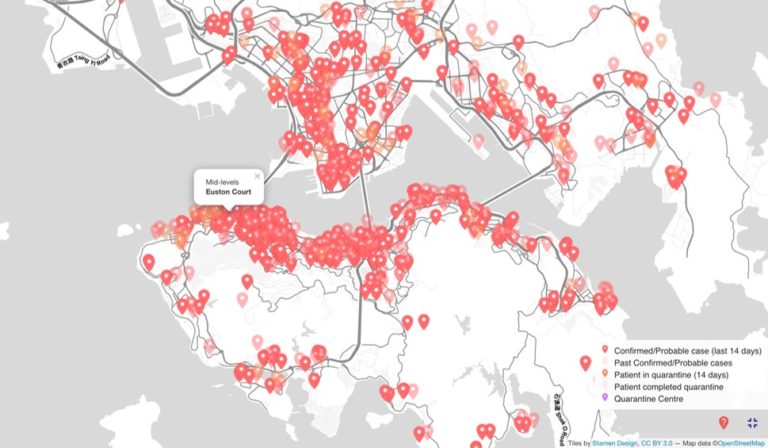
New Zealand
Written by Leigh McKenzie
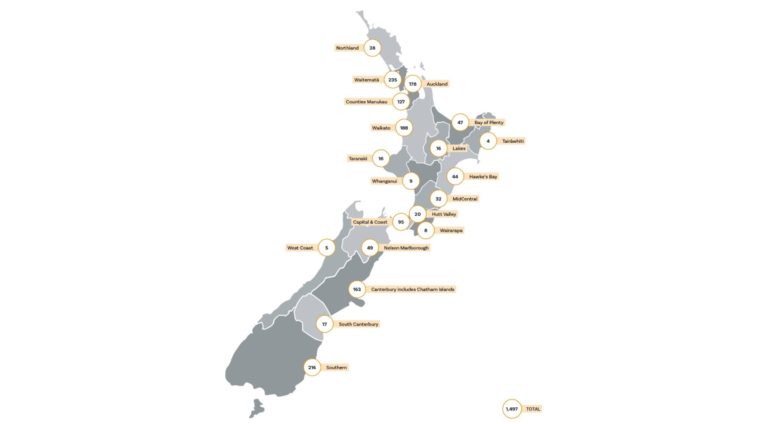
Turkey
Written by Balca Ağaçsapan
The Turkish Pharmacists’ Association (Türk Eczacıları Birliği) provides information on a mobile app that illustrates pharmacies on shift using the map infrastructure of Başarsoft (an IT company based in Turkey). This information can easily be adapted to risk management applications as a utility service. In Turkish, the app is called “Eczanem Nerede” or “Where’s my pharmacy?” Through this mapping app, users can locate their nearest pharmacy quickly.
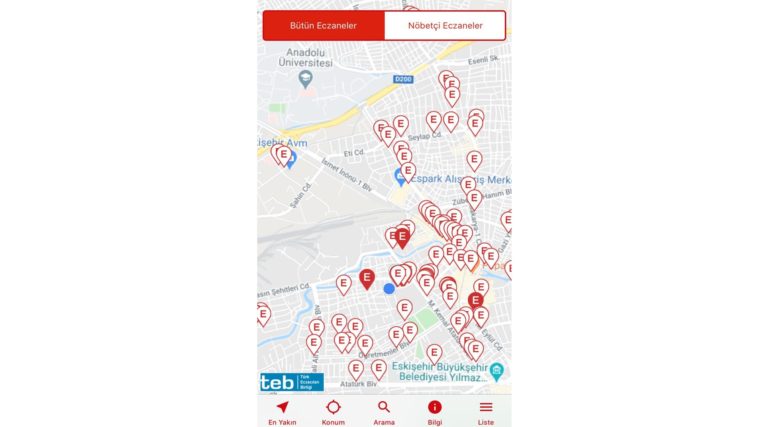
International Mapping Collaborations
NextStrain
Written by Balca Ağaçsapan and Emily Acheson
This collaborative team credits the GISAID Initiative. GISAID promotes international sharing of influenza virus sequences, related clinical and epidemiological data, and geographical data to help researchers study the potential causal factors in viral pandemics.
To check out the most up-to-date mapping of COVID-19, click here.
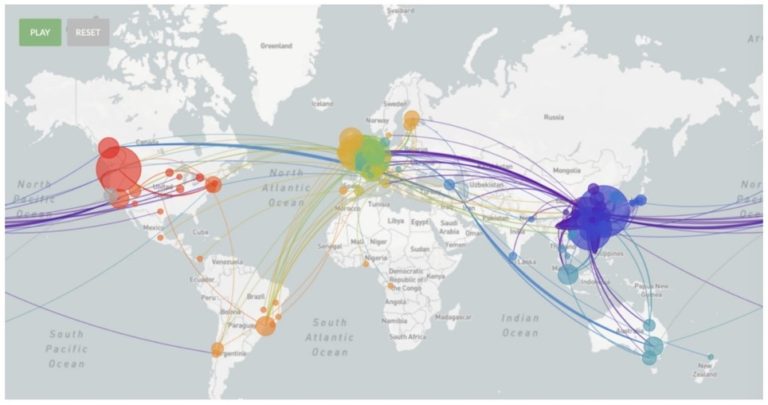
Teralytics
Written by Simon Haumann
Teralytics now offers their data for free to epidemiologists, research institutes, and health authorities. By doing so, Teralytics helps researchers assess whether and in which degree policy interventions have been proven effective, among other initiatives. Hence, Teralytics has partnered with the John Hopkins University or the German Robert Koch Institute to track how mobility is affected across Germany due to COVID-19. Teralytics also tries to encourage even more people to stay home with articles like in Germany’s Bild and Italy’s la Repubblica – with interactive maps similar to the ones for Germany or Italy now also available for the US.
If you are among the mentioned organizations and think this data could help in your efforts to contain the spread of COVID-19 please reach out to info@teralytics.net.
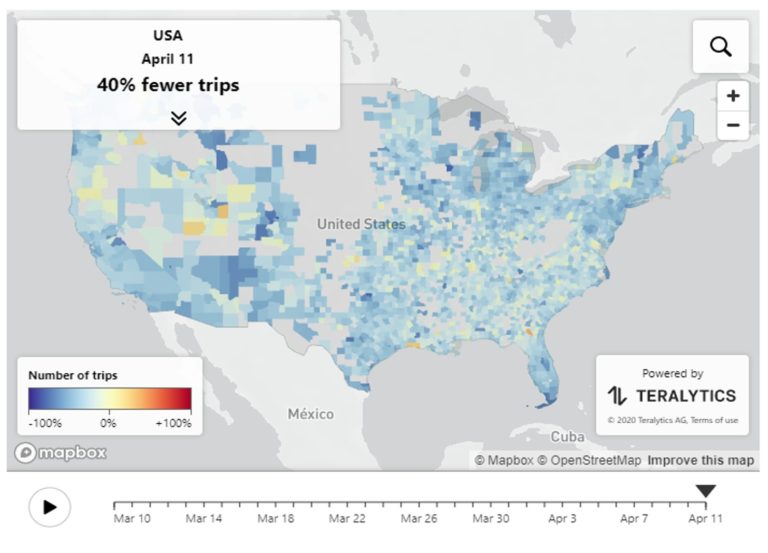
Final Thoughts
Partnerships between disease specialists and mapping experts continue to grow. One great example of that has been this article itself, contributed to by scientists around the world. Others even got in touch asking for mapping assistance for their respective countries. I received a request over Twitter to post an opportunity for GIS enthusiasts to help map France’s COVID-19 data. Data are coming in daily for France here. (Si vous pouvez lire et écrire en Français, ça serait même mieux!) Thank you to @ChristopheVe and @bzg2 for the request.
If you would like even more reading about COVID-19 and GIS mapping around the world, I’d suggest this article in the International Journal of Health Geographics. If you have any questions or comments for any of our contributors, we have all provided our contact information directly below. Stay safe, everyone.
About our Authors


Coluzzi
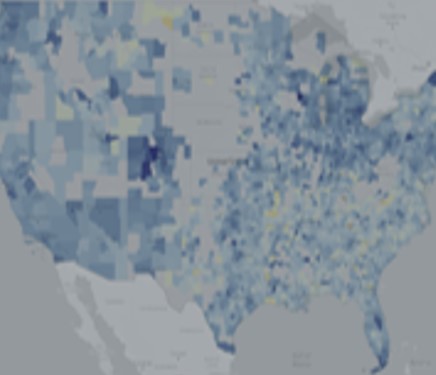


Pearse

StÄhli






